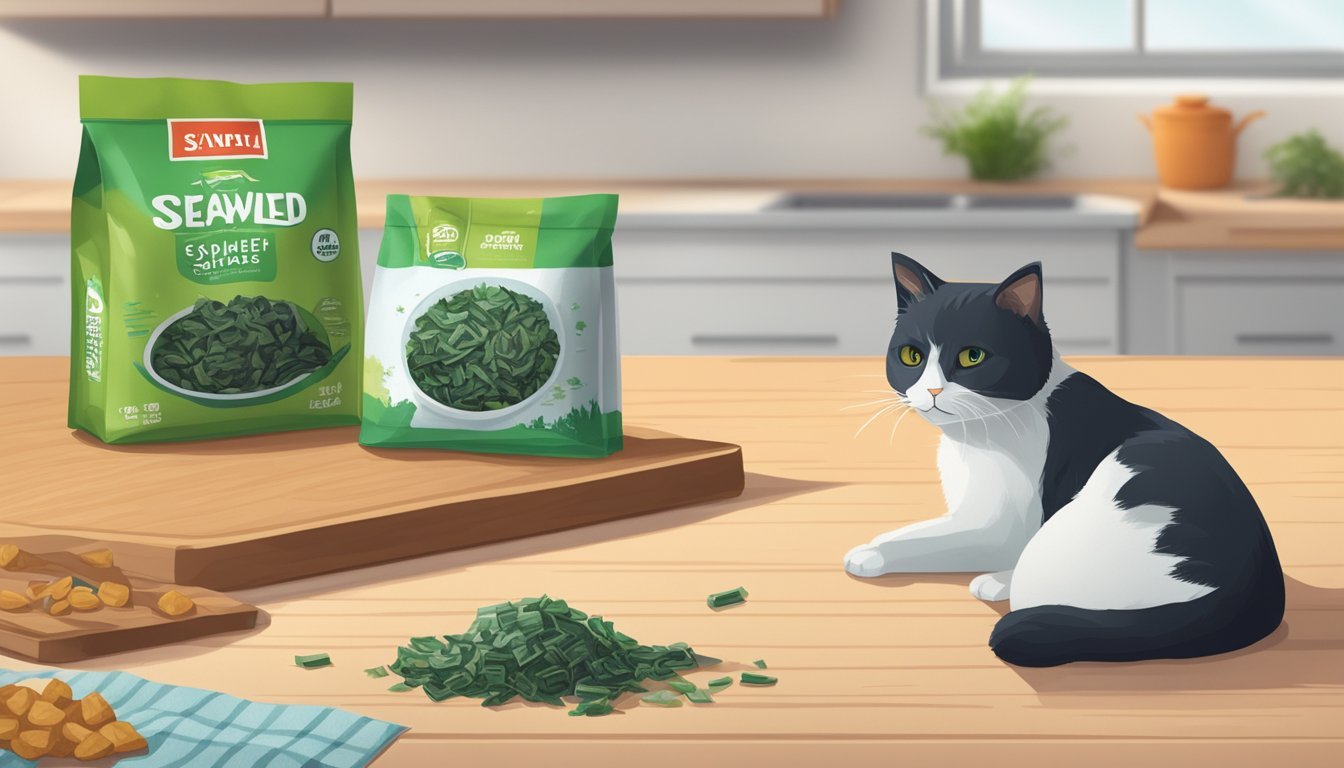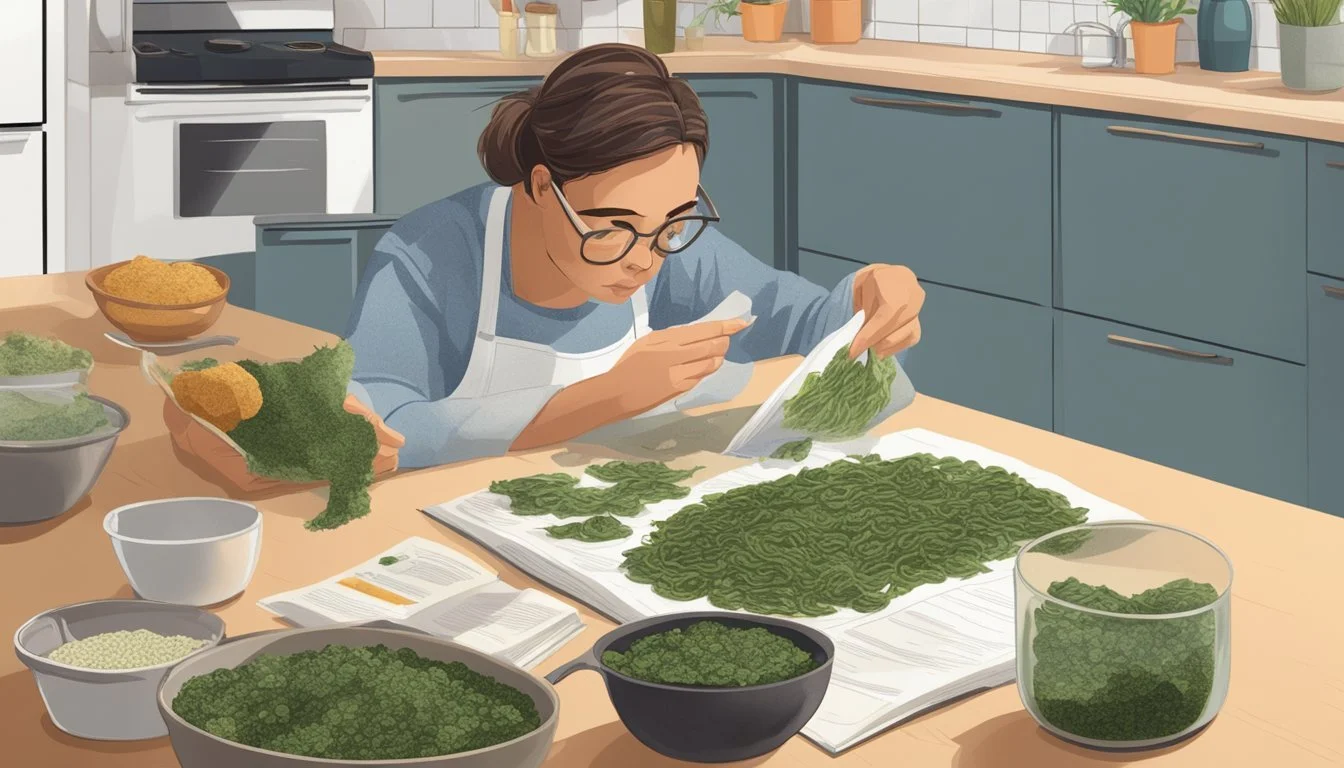Is it Safe to Eat Expired Seaweed Snacks?
Understanding Shelf Life and Consumption Safety
When it comes to food safety and quality, expiration dates are a common point of concern for consumers. Seaweed snacks, known for their crisp texture and rich nutrients, are no exception. The expiration date on a package of seaweed snacks typically serves as a guideline for when the product may begin to decline in quality rather than a strict indicator of safety. Seaweed, due to its low moisture content, is less prone to bacterial growth which allows it to have a longer shelf life compared to many other types of perishable foods.
In terms of safety, eating expired seaweed snacks is generally considered to be low risk. Unlike perishable items like dairy or meats, seaweed does not become unsafe after passing its expiration date. However, the quality might not be optimal. Factors such as taste, texture, and nutritional value can deteriorate over time. It's important to note that if the seaweed develops an off putting smell, changes color, or becomes excessively dry and brittle, it might be best to discard it.
Storage plays a pivotal role in preserving the quality of seaweed snacks beyond their expiration date. Keeping them in a cool, dry place away from direct sunlight can extend their edible period. An unopened package maintains its freshness for a significant time frame, often up to two years. If seaweed snacks are to be kept for extended periods, proper sealing in an airtight container or vacuum sealing can further protect the product from degradation.
Understanding Seaweed and Its Shelf Life
The shelf life of seaweed snacks is determined by factors such as type, storage conditions, and presence of preservatives, which directly impact their quality and nutritional value. Proper understanding of these factors is crucial for safe consumption.
Types of Seaweed and Their Properties
Seaweed comes in various forms, each with unique characteristics affecting shelf life. Nori, often used for sushi rolls, is rich in vitamins and minerals and known for its distinct umami flavor. Wakame, commonly added to soups, is appreciated for its fiber content and texture. Kombu, another type, is a source of iodine and is typically used to flavor broths.
Factors Affecting Seaweed Quality
Seaweed's quality can be influenced by storage conditions and packaging methods. To maintain its nutritional value and flavor, seaweed requires:
Low moisture levels
Cool temperatures
Protection from direct sunlight and heat
Airtight containers can help preserve the quality by reducing exposure to air and moisture.
Determining The Shelf Life of Seaweed
Manufacturers provide an expiration date to indicate when seaweed may begin to lose its optimal quality. While certain processed seaweed snacks can last beyond this date, fresh seaweed varieties have a significantly shorter shelf life. The shelf life depends on:
The type of seaweed
The presence of preservatives
The processing it underwent
Signs of Spoilage in Seaweed
Spoilage can be detected in seaweed snacks through changes in:
Texture: It should not be overly hard or slimy.
Color: Look for any unusual discoloration.
Smell: An off odor may indicate spoilage.
The presence of mold is a clear indication that seaweed is no longer safe to consume.
Safety Concerns With Expired Seaweed
Consumers often question the safety of consuming expired seaweed snacks due to potential spoilage and bacterial growth. Understanding the health risks associated with spoiled products can guide decisions regarding the consumption of expired seaweed snacks.
Health Risks of Consuming Spoiled Seaweed
Expired seaweed snacks can pose health risks if spoilage has occurred. Spoilage refers to the deterioration of food quality, indicated by changes in taste, texture, or odor. While spoiled seaweed may not always cause illness, it can contribute to a less nutritious and potentially unpleasant eating experience.
Harmful Bacteria and Seaweed Snacks
Seaweed snacks can become contaminated with harmful bacteria such as Listeria, which can lead to foodborne illness. The risk of contamination increases if the seaweed has been stored improperly or if visible molds are present. Consuming such seaweed can result in symptoms of food poisoning, including nausea, vomiting, and diarrhea.
Can You Eat Expired Seaweed Safely?
Eating expired seaweed is a contentious issue. While expired dried seaweed may not harbor toxins like certain perishable foods, its quality and safety diminish over time. It's important to inspect the product for signs of spoilage or contamination and to exercise caution. If there is any doubt about the safety of the product, it is best to err on the side of caution and not consume it.
Storing Seaweed to Extend Freshness
Ensuring proper storage conditions and utilizing preservation techniques are vital to maintaining the quality and extending the freshness of seaweed snacks.
Proper Storage Conditions for Seaweed
Storing seaweed correctly is essential to prevent spoilage and retain its quality. Dried and roasted seaweed should be kept in a cool, dry place such as a pantry or kitchen cabinet, away from direct sunlight and sources of heat. Pantry storage is generally suitable for short-term storage of up to a few months. For longer shelf life, seaweed can benefit from refrigeration.
When storing, one should place the seaweed in an airtight container to protect it from moisture and other contaminants. Including silica gel packets in the container can help absorb any excess moisture, further safeguarding against dampness.
Techniques for Preserving Seaweed
To preserve seaweed for extended periods, certain techniques can be employed:
Freezing: Freezing is an effective method to extend seaweed's shelf life beyond what pantry storage can offer. For fresh seaweed, blanching before freezing can help preserve its texture and flavor. Dried or roasted seaweed can be frozen as is. When freezing, one should ensure the seaweed is dry and packaged in airtight containers or vacuum-sealed bags.
Drying: For fresh seaweed, drying it thoroughly is a fundamental step for preservation. One can dry seaweed at home using a dehydrator or by laying it out in a dry, well-ventilated area. Once the seaweed is completely dry, it should be transferred to airtight containers and placed in a dry, cool environment to maximize its shelf life.
Applying these methods will help maintain the freshness and quality of seaweed snacks, whether they are dried or roasted, ensuring a delicious and safe product for future consumption.
Eating Seaweed Snacks After Expiration
Seaweed snacks are generally safe to consume after their expiration date, but their quality may decline. The key points to consider are assessing the state of the expired seaweed snacks and the best practices for consumption.
Assessing Expired Seaweed Snacks for Consumption
Safety: Seaweed snacks past their expiration date are usually safe to eat if they have been stored properly. These snacks are dry, making them less prone to bacterial growth that typically affects perishable items.
Quality Variables:
Smell: An unusual smell is often the first sign that seaweed snacks should not be consumed.
Color: Any noticeable change in color can indicate spoilage.
Texture: Seaweed that has become overly dry, brittle, or soggy may not provide the best experience.
Nutritional Content: Essential nutrients such as iodine, iron, and vitamin B12 could degrade over time, affecting the health benefits.
Best Practices for Consuming Seaweed Past Its Expiration
Storage: To extend the shelf life and maintain quality, store seaweed snacks in a cool, dry place, away from sunlight and humidity.
Use By Guidelines:
Unopened Packs: Roasted seaweed snacks remain largely unaffected for 1 to 2 years beyond the printed date.
Opened Packs: Once opened, consume them promptly to prevent degradation in quality.
When in doubt, it's best to err on the side of caution and dispose of seaweed snacks that present any signs of spoilage.
Impact of Expired Seaweed Snacks on Recipes
When incorporating seaweed snacks into recipes, the freshness can significantly affect both the final dish's flavor and nutritional profile. Expired seaweed may not impart the desired taste or health benefits typically associated with this ingredient.
Role of Seaweed in Culinary Preparations
Seaweed plays a pivotal role in various Asian dishes, notably in Japanese and Korean cuisine. It is a versatile component in recipes ranging from sushi rolls to seaweed salad and soups. Fresh seaweed like nori and kombu is prized for its rich, umami flavor and high nutritional value, contributing essential nutrients and minerals to a dish. Using fresh seaweed in culinary preparations ensures that the integrity of traditional recipes is maintained, ensuring an authentic taste experience and full nutritional benefits.
In Japanese cuisine, for instance, sushi relies on the crisp texture and marine taste of nori, while in Korean cuisine, snacks and side dishes often utilize seaweed for its subtle yet defining flavor contribution.
Substituting Expired Seaweed in Dishes
Using expired seaweed snacks as a substitute in dishes where seaweed is a key ingredient can lead to compromised results. Although it may be safe to consume, expired seaweed can undergo changes in taste, becoming less pronounced or slightly off, and lose its characteristic crispness, leading to an undesirable texture in the final dish.
Nutritionally, while expired seaweed isn't necessarily harmful, it may offer fewer benefits than its fresh counterpart. Essential vitamins and minerals can degrade over time, lessening the healthful impact that seaweed is known for. Chefs and home cooks aiming for the optimal sensory and health experience are advised to use fresh seaweed when the ingredient is central to a recipe's success.
For dishes that heavily depend on the nuanced flavors and structural qualities of seaweed, such as in a seaweed salad where its texture is crucial, or in the layering of flavors in soups, the use of expired seaweed is not recommended. Sushi, which capitalizes on the crispness and flavor of nori, could also be significantly diminished if made with expired seaweed.
Alternatives to Discarding Expired Seaweed
When expired seaweed snacks are deemed unsuitable for consumption, they need not be wasted. There are environmentally-friendly ways to repurpose or recycle this organic material, emphasizing sustainability in waste management.
Composting Expired Seaweed
Expired seaweed can be a valuable addition to a compost pile. It decomposes just like any other organic matter, enriching the compost with minerals beneficial for soil health. To compost seaweed snacks:
Cut them into small pieces to accelerate decomposition.
Mix with other compost materials like vegetable scraps and dried leaves to balance the green (nitrogenous) and brown (carbon-rich) elements.
It's important to monitor the compost's moisture levels, as seaweed snacks might contain added salt which can affect microbial activity.
Creative Uses for Expired Seaweed Snacks
Instead of throwing them away, consider the following creative uses for expired seaweed snacks:
Seasoning and Garnishing: Grind the seaweed into a fine powder to season dishes or garnish finished plates with a unique umami flavor.
Crafting Materials: Utilize the sheets as a natural, textured element in various crafts or as an educational tool.
By considering these alternatives, they reciprocate a respect for the environment while finding innovative ways to utilize expired seaweed snacks.






